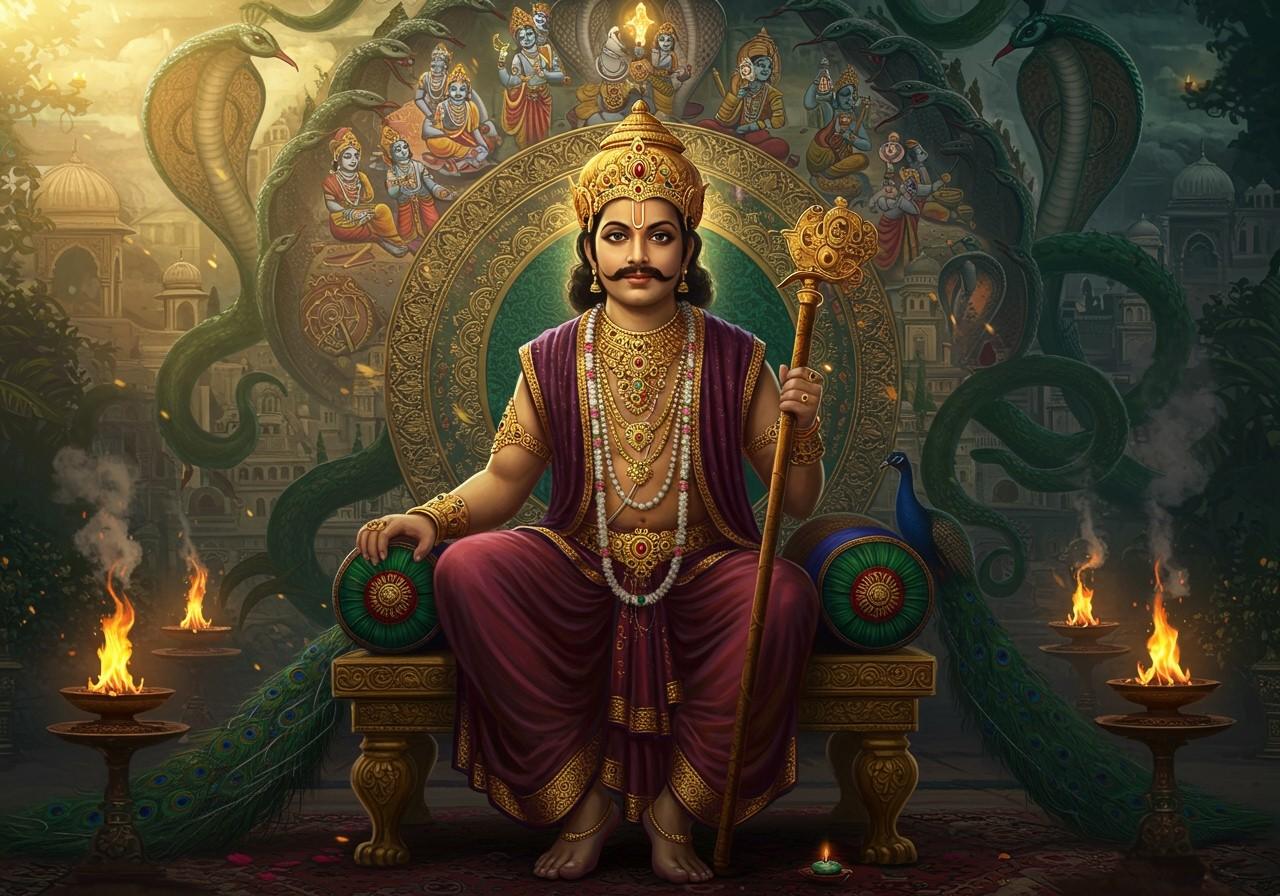
King Parikshit, a pivotal figure in the Mahabharata, holds a significant place in Hindu tradition. This article delves into the life, reign, and enduring legacy of this remarkable king, offering insights into his contributions and the lessons we can glean from his story. Understanding Parikshit’s journey allows us to appreciate the values and complexities of ancient Indian history and its enduring relevance.
Who Was Parikshit in the Mahabharata?
Parikshit was the son of Abhimanyu and Uttara, and the grandson of Arjuna. He stands as a symbol of the continuation of the Kuru dynasty, carrying the weight of his lineage after the devastating Kurukshetra War. Renowned for his piety and unwavering adherence to dharma (righteous conduct), Parikshit played a vital role in preserving the legacy of his ancestors. His wisdom and dedication to just rule are often highlighted in the epic.
Parikshit’s Birth and Early Life
Parikshit’s birth is shrouded in both tragedy and miracle. Born shortly after the Kurukshetra War, he miraculously survived a lethal attack while still in his mother’s womb thanks to the divine intervention of Lord Krishna, who neutralized Ashwatthama’s Brahmastra. This miraculous event underscored his destiny and the divine favor upon him, ensuring the survival of the Pandava lineage. He was the sole heir of the Pandavas after the war.
Parikshit’s Reign and Accomplishments
Parikshit married princess Madravati of the Madra Kingdom. Crowned king by Yudhisthira, Parikshit reigned for an impressive sixty years. His rule was marked by peace and prosperity, a stark contrast to the preceding war-torn era. He diligently worked to restore stability and order, revitalizing traditional Vedic practices and rituals. He also re-established law and order, ensuring the well-being of his subjects. His commitment to dharma characterized his kingship, solidifying his place as a righteous ruler.
The Curse and Parikshit’s Demise
Despite his righteous reign, Parikshit’s life met a tragic end. He was cursed by a sage to die from a snake bite within seven days. Accepting his fate, Parikshit handed over the throne to his son, Janamejaya, and spent his final days listening to the discourses of Sage Śukadeva, attaining spiritual enlightenment before his demise. This event further emphasizes the cyclical nature of life and the importance of dharma, even in the face of death.
The Legacy of King Parikshit
Parikshit’s legacy extends beyond his reign. His son, Janamejaya, performed the Sarpasatra (snake sacrifice) to avenge his father’s death by Takshaka, the serpent king. This event led to the narration of the Mahabharata by Sage Vaishampayana, immortalizing Parikshit’s story and the lessons it holds. Parikshit’s life serves as a powerful example of dharma, devotion, and the intricacies of kingship, continuing to inspire and educate generations.
FAQs About King Parikshit
Was Parikshit a king? Yes, Parikshit was a prominent king in the Mahabharata, known for his just rule and devotion to dharma. He ruled for sixty years, bringing peace and prosperity to his kingdom after the Kurukshetra War.
Who were Parikshit’s parents? Parikshit was the son of Abhimanyu, the valiant warrior who tragically fell in the Kurukshetra War, and Uttara, the princess of Matsya.
How did Parikshit die? King Parikshit died from a snake bite, a consequence of a curse placed upon him by a sage. He accepted his fate with grace, dedicating his final days to spiritual pursuits.
Who succeeded Parikshit? After Parikshit’s death, his son, Janamejaya, ascended to the throne and continued the Kuru lineage. He is known for conducting the Sarpasatra, a significant event linked to the narration of the Mahabharata itself.
Connect with Parikshit’s Legacy through Poojn.in
Poojn.in, India’s leading online store for cultural and religious goods, offers a wide range of products to help you connect with the rich spiritual heritage of figures like King Parikshit and Lord Krishna. Explore our curated collection to enhance your devotional practices:
- Brass Laddu Gopal Murti: Beautiful and intricately designed Laddu Gopal statues, perfect for your home altar, symbolizing Lord Krishna’s divine presence, reminiscent of the deity who protected Parikshit in his mother’s womb.
- Pure Copper Ananda Kosha Kushi: Essential for traditional puja ceremonies, these copper vessels are ideal for offerings and maintaining the sanctity of your rituals, mirroring the Vedic practices revived during Parikshit’s reign.
- 100% Pure Arjun Chal (Terminalia Arjuna Bark): Known for its medicinal and spiritual significance, Arjun Chal can be used in various rituals and offerings, connecting you to the ancient traditions upheld by King Parikshit.
Visit poojn.in today to discover a wide array of authentic puja items and deepen your connection to India’s rich spiritual heritage. We offer high-quality products and pan-India delivery, ensuring a seamless and enriching experience for all your devotional needs.


